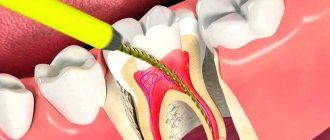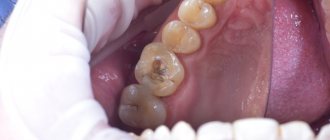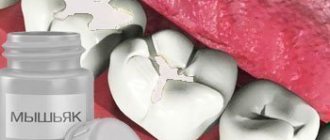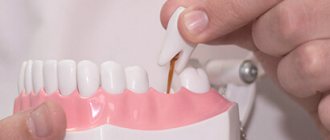How is a light seal different from a regular one?
In fact, the term “light filling” is more popular among the people, but experts usually use other names: photopolymer, light-curing, heliopolymer are the most common of them. A light filling is a fairly plastic material, and thanks to ultraviolet light it is much easier for a specialist to carry out a filling. This is the main difference between a light filling and a regular one. In addition, you can choose many colors and shades for a light filling, which is why it is so often used in the treatment and restoration of teeth in the smile area. In short, the main advantages of a light filling are reliability, durability and high aesthetics. These qualities make light-based dental fillings one of the most sought after in the dental market.
Teeth whitening with fillings on the front teeth is a way out of the situation
Dental fillings, unfortunately, do not whiten, however, if you plan to whiten the filled front teeth, first of all you need to carry out the teeth whitening procedure itself, and then wait a period of about two weeks, after which, at a second visit to the dentist, the teeth with fillings should be filled new to match your new, whiter color.
After whitening, a period of approximately two weeks is required before replacing fillings. This is because it takes a period for the color of your healthy teeth to stabilize after whitening. If caries is present, treatment and filling of the tooth must be carried out before safe whitening. Over time, the color of the tooth filling will change and will not match the color of the whitened teeth; in this case, the patient is recommended to renew the tooth filling by waiting the period of time recommended by the dentist.
Composition of the light seal
The vast majority of filling types are based on the use of a mixture of several materials. A filling made from a light-curing composite has a rather complex composition, which is partly why it costs more than its analogues.
Light seal materials
- Heliocomposite.
The basis of a light filling, which under the influence of an ultraviolet lamp breaks down into radicals, due to which polymerization (hardening) of the filling material occurs. - Filler.
This can be silicon dioxide, glass ceramics, etc. The structure, color and area of application of the filling depend on the type of filler. - Connecting elements.
Features of conventional fillings, advantages and disadvantages
The phrase “conventional filling” refers to chemically cured filling material. The process of making such a filling involves mixing the filling composition. When the components of a conventional filling are mixed, a chemical reaction occurs, as a result of which the filling material becomes hard over a period of time. Chemical fillings not only help to seal a tooth affected by caries, in addition to performing the filling function, chemical fillings protect the tooth from the recurrence of the carious process, this happens due to fluoride, which is released by the chemical filling during the time it is worn. The advantages of conventional fillings also include the fact that their hardness is identical to the hardness of tooth enamel.
Conventional fillings differ from each other in the chemical components they contain. Chemical fillings may contain glass ionomer cement or a composite, which is a mixture of various compositions.
Advantages of composite fillings:
- composite fillings are not exposed to liquid agents, including saliva;
- Composite fillings have the highest degree of strength.
Advantages of glass ionomer cement fillings:
- glass ionomer cement fillings contain fluoride compounds;
- glass ionomer fillings fit most tightly to the surface of the teeth and have minimal chances of “peeling off”;
- Their glass ionomer cement fillings make it possible to fill molars with the highest quality.
Types of light seals
Some sources indicate that only anterior teeth can be restored using light-curing composite fillings, but this is incorrect information. Today, such filling is successfully used in all departments, except for the most inaccessible places (for example, “wisdom teeth”). All types of light fillings differ in the composition of the filler, which determines their characteristics.
| Light fillings for teeth | Description | Application area |
| Macro-filled light fillings (light fillings for chewing teeth) | The filler consists of solid large particles (macrophiles). They give the filling strength, but have a rough surface and tend to lose color. | Macrophilic light fillings are usually used on posterior teeth or on the inside of the dentition, where aesthetics are less important. |
| Microfilled light fillings (light fillings for front teeth) | Fillers consisting of small particles. They hold color well, can be polished, but are very fragile. | Mostly used in the smile area. |
| Nanohybrid | They consist of ultra-fine particles that are both durable and aesthetic. | Universal light fillings that can be used in all types of restorations. |
Darkening around the perimeter
If the patient notices a clear change in the color of the filling along the edges, where it adheres to the tooth, the problem is most likely not due to coloring products. This may indicate that the filling material does not fit tightly enough into the cavity and is not completely sealed. As a result, bacteria and dirt penetrate into the open gap, which gradually leads to darkening and destruction of the material.
The only possible way out in this situation is to replace the filling with a new one. This must be done even if at first glance the filling looks great and does not cause any discomfort. It can cause the development of deep caries and other dental diseases, such as pulpitis.
What conclusion can be drawn? In any case, contacting your dentist if the filling darkens is mandatory. You should not try to correct the situation on your own at home; traditional methods will be powerless here.
previous post
Tool fragment in the channel
next entry
Installation of a light seal
Today, a light filling can be installed in almost any clinic. Installation has approximately the same number of steps as in the case of other types of fillings (with the exception of scanning with an ultraviolet lamp).
- Initial consultation, panoramic x-ray.
- Anesthesia.
- Preparation of damaged tooth tissues. During depulpation, the canals are treated and a temporary filling is installed.
- Placing a light filling (filling the area with filling material and giving it a primary shape).
- Polymerization of the filling under the influence of ultraviolet light.
- Grinding and finishing of the filling to achieve optimal shape and correct occlusal contact.
If after filling with a light filling your tooth hurts for more than three days or you feel discomfort when closing your jaws, contact your doctor as soon as possible. Find a trusted clinic where you can get a filling in Moscow on Startsmile.ru in the “Search for dentists” section
Light
In the professional language of dentists, there are several variations of names for this filling: light, light-composite, gel filling. These terms have a direct connection with the method of curing the filling material. The light seal hardens when exposed to ultraviolet radiation from a special lamp. The hardened material looks natural and aesthetically pleasing. It fits tightly to the edges of the teeth and guarantees long service life.
The difference between light and conventional fillings also lies in the speed at which the material hardens. The components of the light filling polymerize under ultraviolet radiation and harden much faster than the ingredients of the chemical composition. It is very important for a dentist to do everything in 40 seconds. Otherwise, the filling material will begin to crack, since during the hardening process the dental canals are subjected to enormous stress from the inside. Dentists try to avoid this complication. To reduce the risk of cracks, filling material is applied to the canals in stages, in layers.
Attention! The main advantage of a light-curing filling is the ability to restore broken and completely destroyed teeth. The dentist can restore the natural shape of the tooth, its relief, and select the desired shade for full compatibility with the natural color of the enamel.
The light filling literally returns to the patient what seemed hopelessly lost - a realistic tooth and a smile without complexes. But there is also a minus. If the carious cavity is very deep, the dentist will not be able to perform light polymerization and will place a conventional chemical filling in the tooth.
How much does it cost to install a light seal?
In order to most accurately tell you how much it costs to get a light filling, you need to understand what type of filling will be installed, as well as where exactly the treatment will take place. The cost of a light filling in a state clinic starts from 900 rubles. As a rule, this is a medium quality composite material intended for the restoration of chewing teeth. In private dental clinics in Moscow, the price of a light filling starts from 1,500 – 2,000 rubles. Light fillings for front teeth are more expensive: for aesthetic restorations, the price can exceed 3,000 rubles.
Our clinics
Clinic "Elident" on Varshavskaya
Varshavskoe highway, 75, bldg. 1, Moscow 117556
- Varshavskaya (500 m, closed until 2021)
- Nakhimovsky Prospekt (1,300 m)
Mon-Sat : 09:00-21:00; Sun : 09:00-19:00.
Online registration
+7 (495) 649-41-19
Elident Clinic in Annino
Varshavskoe highway, 154, building 1, Moscow 117405
- Annino (500 m)
- Academician Yangelya (700 m)
Mon-Sat : 09:00-21:00; Sun : 09:00-19:00.
Online registration
+7 (495) 649-41-19
Light seal Vitremer “Pros”
Vitremer composite material is widely used in dentistry. It allows you to give a natural shine to your teeth during restoration. Thanks to the installation of this filling, strong contact with hard dental tissues is ensured.
In addition, Vitremer (light filling) has the following features:
- Provides optimal contact with dentin and composites;
- Allows you to choose a color identical to natural teeth;
- Possesses radiopacity;
- Increased resistance to acids;
- Solubility ability.
Light seal Revolution
Revolution photopolymers allow you to:
• Eliminate enamel defects; • Restore occlusal cusps and seal grooves; • Perform installation of composite and ceramic veneers; • Restore the stump of teeth and their cutting edges.
Distinctive characteristics
A light filling should be compared with a chemical one. The latter is installed only in the case of treatment of one element, if a small damage cavity is noted. For anterior dental elements, the only correct option is light. This is explained by an excellent selection to match the natural tone of the tooth, so the beauty of the smile will be preserved.
In addition, emphasis should be placed on the fact that the light composition is established in a less painful way. Namely, the patient is protected from the unpleasant sounds of the drill, and also does not feel discomfort, on the contrary, as with a chemical composition.
Before and after installing light fillings
Questions and answers
Dentists identify a group of the most common questions:
- Caries under filling
- How long after filling with light material can I eat? In order for the photopolymer to harden and last as long as possible, it takes two hours after the main manipulation. The process of complete stabilization of all chemical bonds lasts for 24 hours after filling.
- Is it true that a light filling adheres well to the teeth and is almost invisible? The quality of a light filling is determined by the following factors: adhesive (liquid for washing the cavity) and exposure to an ultraviolet lamp (strengthens the ligament).
Light seal
- Is it possible to restore a filling? After some time, the filling can be easily restored. Installation of the photopolymer takes place in several stages (cleaning the cavity, administering anesthesia, working with a drill, grinding and polishing). For indirect restoration, ceramic crowns are used.
- How is a light filling restored? To do this, a polymer material with a nano-file is installed. The duration of the procedure does not exceed one hour. And the result can correct most defects.
- Is it possible to install a filling made of luminous material for children? Filling baby teeth and molars that have recently appeared with light material is not recommended. This is explained by the strong pressure on the young tooth, as well as the need for maximum cleaning of carious formations, which is not so easy for children.
- What should not be done after installing a light filling? You should minimize the consumption of certain foods that stain the tooth surface (coffee drinks, strong black tea, beets, cherry and pomegranate juice). The main thing is not to use the mentioned products for five days after installation, so as not to spoil the result of the filling.
Harmful foods for teeth
- How is the cost of a light filling determined? The price is determined by the quantitative indicator of the material used and the level of restoration work. The service will be much more expensive if a complex procedure must be performed on the front dental elements.
You can visually familiarize yourself with the procedure of tooth restoration using a light filling by watching the video.










